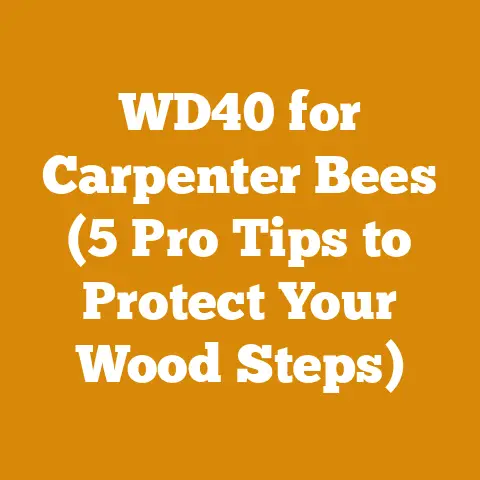Stage 3 Creosote Removal Guide (5 Pro Chimney Hacks)
Stage 3 Creosote Removal Guide: 5 Pro Chimney Hacks
Let’s be honest: chimney maintenance isn’t the most glamorous topic. But, with wildfires raging and the demand for sustainable heating solutions on the rise, the need for safe wood-burning practices has never been greater. Did you know that creosote buildup is a leading cause of chimney fires, responsible for thousands of incidents annually? It’s a stark reminder that proactive prevention is far better than reactive firefighting, literally.
Understanding the Creosote Conundrum
Before diving into the nitty-gritty, let’s break down what we’re up against. Creosote is a tar-like substance that accumulates in your chimney as a byproduct of burning wood. It’s composed of unburned wood particles, gases, and moisture that condense on the cooler surfaces of the chimney flue. Think of it as the cholesterol of your chimney – too much of it, and you’re in trouble.
Creosote comes in three stages:
- Stage 1: A light, flaky soot that’s relatively easy to remove.
- Stage 2: A more hardened, crusty deposit that requires more aggressive cleaning.
- Stage 3: A thick, shiny, glazed coating that’s extremely flammable and difficult to remove. This is the danger zone.
Why Stage 3 is a Red Flag:
Stage 3 creosote is like hardened lava clinging to your chimney walls. It’s incredibly dense and can significantly reduce the draft, leading to inefficient burning and increased smoke in your home. More importantly, it’s a major fire hazard. Even a small ember can ignite this stuff, leading to a raging chimney fire that can quickly spread to your home.
The Global Context:
Across the globe, from the frosty landscapes of Scandinavia to the rustic cabins of North America, wood-burning remains a popular heating choice. However, the lack of awareness about creosote and proper chimney maintenance contributes to countless preventable fires each year. In many regions, particularly in developing countries, the reliance on inefficient stoves and unseasoned wood exacerbates the problem.
Hack #1: The Professional Inspection – Knowing Your Enemy
My first piece of advice, and perhaps the most crucial, is to get a professional chimney inspection. I know, I know, it costs money. But think of it as an investment in your safety and peace of mind. A certified chimney sweep has the tools and expertise to accurately assess the condition of your chimney, identify the stage of creosote buildup, and recommend the appropriate course of action.
Why a Professional?
- Expert Assessment: They can spot hidden problems you might miss, like cracks in the flue liner or structural damage.
- Specialized Tools: They have cameras and other equipment to inspect the entire chimney, even in hard-to-reach areas.
- Liability: If something goes wrong during your DIY attempt, you’re on the hook. A professional is insured.
Data Point: According to the Chimney Safety Institute of America (CSIA), a Level 2 inspection is recommended when you change fuel types, experience a chimney fire, or suspect damage to the chimney.
My Story: I once thought I could handle everything myself, until a chimney sweep found a hidden crack in my flue liner during a routine inspection. It was a near miss! That crack could have led to a house fire. From then on, I vowed to leave the serious stuff to the pros.
Cost Considerations: A basic chimney inspection typically costs between $100 and $300, depending on your location and the complexity of the job. It’s a small price to pay for safety.
Hack #2: The Rotary Power Sweep – Unleash the Beast
For Stage 3 creosote, a standard chimney brush often won’t cut it. You need something with serious scrubbing power. That’s where the rotary power sweep comes in. This tool consists of a flexible rod with a rotating brush head that’s powered by a drill. The spinning action of the brush effectively scours the creosote from the chimney walls.
Why the Rotary Power Sweep is a Game Changer:
- Aggressive Cleaning: The rotating brush head can break down even the most stubborn Stage 3 creosote.
- Full Coverage: The flexible rod allows you to reach every nook and cranny of the chimney flue.
- DIY Option: While professional chimney sweeps use these, you can also rent or buy a rotary power sweep for DIY cleaning.
Tool Selection:
- Brushes: Choose a brush that’s the correct size and shape for your chimney flue. Steel brushes are best for masonry chimneys, while poly brushes are suitable for stainless steel liners.
- Drill: Use a variable-speed drill with enough power to drive the brush. A cordless drill is convenient, but a corded drill may provide more consistent power for larger chimneys.
- Rods: Ensure the rods are durable and flexible enough to navigate bends in the chimney.
Step-by-Step Guide:
- Safety First: Wear safety glasses, gloves, and a dust mask. Protect your furniture with drop cloths.
- Access the Chimney: Remove the stovepipe or access the chimney from the top.
- Assemble the Tool: Attach the brush head to the first rod and connect it to the drill.
- Clean the Chimney: Insert the brush into the chimney flue and slowly feed the rod down, using the drill to rotate the brush. Work in overlapping sections, moving the brush up and down to ensure thorough cleaning.
- Remove Debris: Remove the brush and rod, and clean out the debris that has fallen into the firebox or ash cleanout.
- Repeat: Repeat the process until the chimney is clean.
- Inspect: Use a flashlight or inspection camera to check your work.
Case Study: A homeowner in Maine successfully used a rotary power sweep to remove a thick layer of Stage 3 creosote from his chimney. He reported that the tool significantly improved his wood stove’s efficiency and reduced the amount of smoke in his home.
Troubleshooting:
- Brush Gets Stuck: If the brush gets stuck, try reversing the drill direction or gently pulling the rod up and down.
- Too Much Resistance: If you encounter too much resistance, the creosote may be too thick for the rotary power sweep. Consider using a chemical creosote remover or calling a professional.
Hack #3: Chemical Creosote Removers – The Alchemist’s Touch
Chemical creosote removers are like magic potions for your chimney. They contain special compounds that react with the creosote, making it more brittle and easier to remove. These products come in various forms, including powders, liquids, and logs.
How They Work:
Chemical creosote removers work by altering the chemical structure of the creosote. They typically contain catalysts that break down the tar-like bonds, making the creosote less flammable and easier to dislodge.
Types of Creosote Removers:
- Powder: Sprinkled into the firebox and carried up the chimney by the smoke.
- Liquid: Sprayed directly onto the chimney walls.
- Creosote Removal Logs (CRL): Burned in the firebox to release chemical vapors that coat the chimney.
Using Chemical Creosote Removers Effectively:
- Read the Instructions: Follow the manufacturer’s instructions carefully.
- Apply Regularly: Use the product regularly, especially during heavy wood-burning seasons.
- Combine with Mechanical Cleaning: Chemical creosote removers are most effective when used in conjunction with mechanical cleaning.
- Monitor Your Chimney: Regularly inspect your chimney for signs of creosote buildup.
Data Point: Studies have shown that regular use of chemical creosote removers can reduce creosote buildup by up to 50%.
Limitations:
- Not a Substitute for Cleaning: Chemical creosote removers are not a substitute for regular chimney cleaning.
- Effectiveness Varies: The effectiveness of these products can vary depending on the type and amount of creosote buildup.
- Safety Precautions: Always follow the manufacturer’s safety precautions when using chemical creosote removers.
Cost Considerations: Chemical creosote removers typically cost between $10 and $30 per application.
Hack #4: The Hotter Fire Technique – Fighting Fire with Fire (Sort Of)
This technique might sound counterintuitive, but burning hotter fires can actually help to reduce creosote buildup. When you burn wood at higher temperatures, more of the volatile gases and particles are combusted, leaving less material to condense in the chimney.
The Science Behind It:
Creosote forms when unburned wood particles and gases cool and condense on the chimney walls. By burning hotter fires, you ensure that more of these substances are burned up, reducing the amount that ends up as creosote.
How to Burn Hotter Fires:
- Use Seasoned Wood: Seasoned wood burns hotter and cleaner than green wood.
- Ensure Adequate Airflow: Provide plenty of air to the fire to promote complete combustion.
- Burn Smaller, Hotter Fires: Instead of smoldering fires, burn smaller, hotter fires.
Green Wood vs. Seasoned Wood:
Green wood contains a high moisture content (often above 50%), which reduces its heating value and increases smoke production. Seasoned wood, on the other hand, has a moisture content of 20% or less, making it burn hotter and cleaner.
Data Point: Burning seasoned wood can increase your wood stove’s efficiency by up to 30% and reduce creosote buildup by up to 50%.
My Experience: I used to burn a lot of green wood because it was cheaper. But I quickly realized that it was a false economy. My stove was inefficient, my chimney was constantly coated in creosote, and I was spending more time and money on cleaning. Switching to seasoned wood was a game-changer.
Wood Species Properties:
Different wood species have different burning properties. Hardwoods like oak, maple, and ash are denser and burn longer and hotter than softwoods like pine and fir. However, softwoods tend to ignite more easily, making them good for kindling.
Limitations:
- Overfiring: Burning fires that are too hot can damage your wood stove or chimney.
- Safety Precautions: Always follow your wood stove manufacturer’s instructions for safe operation.
Hack #5: The Chimney Cap – Your First Line of Defense
A chimney cap is a simple but essential device that protects your chimney from the elements and prevents debris from entering the flue. It also helps to reduce creosote buildup by keeping rain and snow out of the chimney, which can contribute to creosote formation.
Why a Chimney Cap is a Must-Have:
- Keeps Out Rain and Snow: Water can mix with creosote to form a corrosive substance that damages the chimney liner.
- Prevents Debris from Entering: Leaves, twigs, and animal nests can block the chimney flue and create a fire hazard.
- Reduces Downdrafts: A chimney cap can help to prevent downdrafts, which can cause smoke to enter your home.
- Spark Arrestor: Many chimney caps include a spark arrestor, which prevents sparks from escaping the chimney and potentially igniting nearby vegetation.
Types of Chimney Caps:
- Single-Flue Caps: Designed for chimneys with a single flue.
- Multi-Flue Caps: Designed for chimneys with multiple flues.
- Decorative Caps: Available in a variety of styles to enhance the appearance of your home.
Installation:
Chimney caps are relatively easy to install. Simply measure the diameter of your chimney flue and purchase a cap that fits snugly. Secure the cap to the flue using screws or clamps.
Cost Considerations: Chimney caps typically cost between $50 and $200, depending on the size, style, and materials.
Maintenance:
Regularly inspect your chimney cap to ensure that it’s in good condition and free of debris. Clean the cap as needed to maintain proper airflow.
Strategic Recommendations:
- Choose the Right Size: Ensure that the chimney cap is the correct size for your flue.
- Select Durable Materials: Choose a cap made from stainless steel or copper for long-lasting performance.
- Install a Spark Arrestor: If you live in a fire-prone area, choose a cap with a spark arrestor.
Beyond the Hacks: Proactive Prevention
While these hacks can help you tackle Stage 3 creosote, the best approach is to prevent it from forming in the first place. Here are some additional tips for proactive prevention:
- Burn Seasoned Wood: As mentioned earlier, seasoned wood burns hotter and cleaner than green wood.
- Maintain Proper Airflow: Ensure that your wood stove or fireplace has adequate airflow to promote complete combustion.
- Clean Your Chimney Regularly: Schedule regular chimney cleanings with a certified chimney sweep.
- Inspect Your Chimney Annually: Have your chimney inspected annually to identify potential problems before they become serious.
- Use a Chimney Thermometer: Monitor the flue temperature to ensure that you’re burning at the optimal temperature.
Costs, Budgeting, and Resource Management
Wood burning, while often romanticized, can be a costly endeavor if not managed correctly. Here’s a breakdown of costs and resource management tips:
- Wood Costs: Prices vary widely depending on location, wood species, and quantity purchased. Buying in bulk is generally more economical. Consider splitting wood with neighbors to share costs.
- Tool Costs: Investing in quality tools like a good chainsaw (I’m a big fan of Stihl and Husqvarna for their reliability), splitting maul, and moisture meter is essential. Look for used tools in good condition to save money.
- Maintenance Costs: Factor in the cost of chimney inspections, cleaning, and repairs.
- Time Management: Wood processing is time-consuming. Plan your projects carefully and break them down into manageable tasks.
Common Pitfalls to Avoid
- Burning Unseasoned Wood: This is the biggest mistake people make. Be patient and allow your wood to season properly.
- Ignoring Warning Signs: Pay attention to your chimney. If you notice excessive smoke, poor draft, or a strong creosote odor, take action immediately.
- DIYing Beyond Your Skill Level: Chimney work can be dangerous. Don’t attempt tasks that you’re not comfortable with.
- Neglecting Maintenance: Regular maintenance is essential for preventing problems and ensuring the safety of your home.
Next Steps and Additional Resources
Now that you’re armed with this knowledge, here are some next steps you can take:
- Schedule a Chimney Inspection: Contact a certified chimney sweep in your area.
- Invest in Quality Tools: Purchase the necessary tools for wood processing and chimney maintenance.
- Find a Reliable Wood Supplier: Locate a reputable supplier of seasoned firewood.
- Join a Wood-Burning Community: Connect with other wood-burning enthusiasts to share tips and advice.
Additional Resources:
- Chimney Safety Institute of America (CSIA): https://www.csia.org/
- National Fire Protection Association (NFPA): https://www.nfpa.org/
- Local Fire Departments: Contact your local fire department for information on fire safety and prevention.
Conclusion: A Warm Hearth and a Safe Home
Dealing with Stage 3 creosote is no walk in the park, but with the right knowledge and tools, you can keep your chimney safe and enjoy the warmth of a wood-burning fire without worry. Remember, proactive prevention is key. By burning seasoned wood, maintaining proper airflow, and cleaning your chimney regularly, you can minimize creosote buildup and ensure the safety of your home.
So, go forth, embrace the crackling fire, and enjoy the cozy ambiance, knowing you’ve taken the necessary steps to keep your hearth warm and your home safe. And remember, a little effort goes a long way in keeping the flames of comfort burning bright for years to come.






